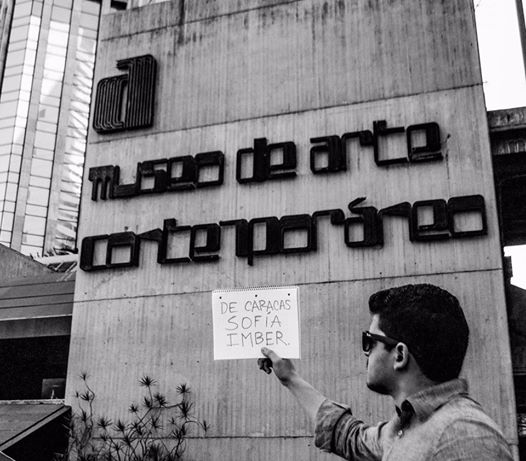Sofia Ímber, 1924-2017
A tribute to a Venezuelan icon.


When I was 17, I left my regular high school and started studying at the Cristobal Rojas School for Visual Arts in Parque Carabobo. One of the many ways this changed my life was that I was started to museums a lot more. And I had it easy. The School was just a few blocks away from Plaza de los Museos, so my friends and I were always hunting for new exhibitions to see.
That’s when I really got to know the Bellas Artes Museum, the National Gallery of Art and, of course, the Sofía Ímber Museum of Contemporary Art. It houses the biggest art collection in Latin America, and also has one of the greatest art libraries in the country. I spent countless hours scouring dictionaries on symbols and philosophy, as well as biographies and beautiful books cataloguing the lives and works of many artists.
But the greatest experience I lived in this museum by far, was going to the opening of an exhibition in honor my favorite Venezuelan artist, Jesús Soto.
The event started at about 9 am, on a Sunday. I had arranged to meet a friend there but he couldn’t make it, so I went on my own. The day was sunny and pleasant, and there was a solid crowd when I got there. Museum staff were handing out leaflets with a short bio of the artist, a brief history of the institution and a description of the exhibition.
As I walked in, I realized this was a much bigger deal than I’d thought. Most of the personal shows I’d been to before were small. This was different. The entire place was full of Soto’s sculptures and installations, most notably two huge Penetrables (one yellow and one blue) that people could freely sample as they walked from one area of the museum to the next.
I already knew that Soto was great, but I saw works that day that were so astonishingly complex and detailed that my befuddled teenage mind could barely wrap around what I was witnessing. I had to dedicate my fair share of time to each of them, so it took me about three hours to visit all the halls.
When I got back to the entrance, people were gathered in one of the main halls. I had to walk up the stairs to the gates to be able to see anything.
And there he was, Jesús Soto himself, with one of his daughters. He was signing a few leaflets, but he was mostly shaking hands and smiling. The wall of people around him ensured that I couldn’t get any closer, so I simply enjoyed the sight and felt so privileged for the opportunity. To my knowledge, this was the last opening he attended himself in Caracas before he left us.
And I was able to do this only because of the effort of one great lady who passed yesterday. Hugo Chávez personally made sure the museum she opened in 1973 and made her life’s work no longer bears her name, but the collection she built remains mostly intact, and all her’s. Reality will not be bullied, and her legacy lives on.
 It was the kind of show only Sofia Ímber could put on. Under her tutelage, MACCSI became a major reference point for Contemporary Art in Venezuela. She showed that it could be done, if only you had the vision, the commitment, and the drive. She remained a touchstone for Venezuelan high culture, and we mourn her with the dire desperation of those who’ve lost a champion not lightly to be replaced.
It was the kind of show only Sofia Ímber could put on. Under her tutelage, MACCSI became a major reference point for Contemporary Art in Venezuela. She showed that it could be done, if only you had the vision, the commitment, and the drive. She remained a touchstone for Venezuelan high culture, and we mourn her with the dire desperation of those who’ve lost a champion not lightly to be replaced.
Sofía Imber did everything. She married Carlos Rangel. She interviewed the Dalai Lama. She couldn’t be stopped.
I never met Sofía Ímber, but she left us with a brilliant example of talent put to good use, and a life well lived. Hopefully, someday soon, Sofia Ímber’s name will be justly reinstated on the face of the building that holds her life’s work.
Caracas Chronicles is 100% reader-supported.
We’ve been able to hang on for 22 years in one of the craziest media landscapes in the world. We’ve seen different media outlets in Venezuela (and abroad) closing shop, something we’re looking to avoid at all costs. Your collaboration goes a long way in helping us weather the storm.
Donate




